Back in October, I seized the opportunity, along with TFS member Marius Berge Eide, to attend the International Astronautical Congress. The 66th edition, hosted in Jerusalem, gathered more than 2000 people from the space world for a week of symposia and various events (panels of the heads of agencies, heads of launch companies, Charlie Bolden’s conference for young NASA collaborators). The most famous attendee surely was Buzz Aldrin, 2nd man on the Moon, who – beyond his status of pioneer in human space exploration – is nowadays often heard of for his will to kick humanity’s asses toward the red planet. Wouldn’t you like to be kicked in that direction?
Then, when “Exploration”, “Human” and “Mars” are 3 words that ring a bell for you (in whichever order you like the best), attending a full afternoon session called “Human Exploration of Mars” seems like a good idea. Then you find yourself in a crowded lecture hall, filled with roughly 150 cinema-like seats, except what you quickly realize that this is about real concepts studied by recognized specialists in the field.
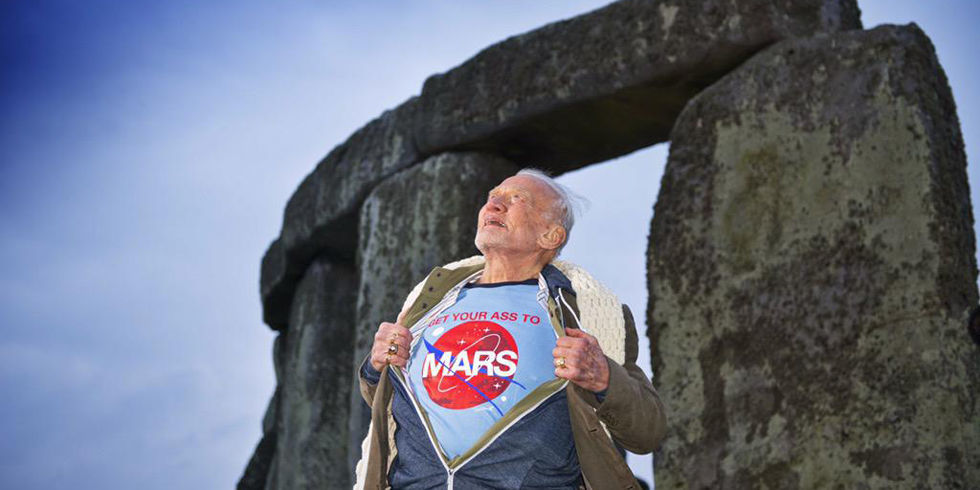
Buzz Aldrin sending a message to cosmos from Stonehenge (Credit: James O.Davies)
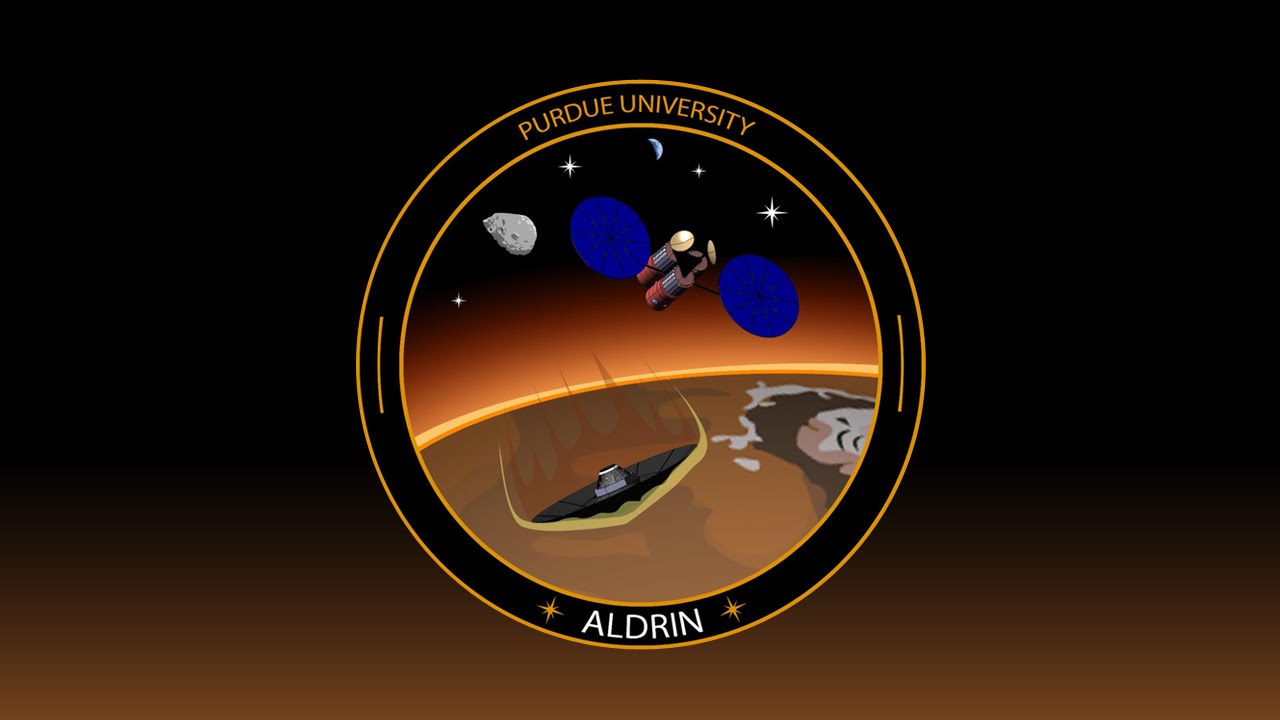
Official logo (Credit: Project Aldrin-Purdue)
Mid-afternoon comes after very interesting talks about different concepts for human exploration of the Martian surface, when Buzz Aldrin’s paper comes next: “A Proposed Architecture to Establish a Permanent Human Presence on Mars“. Prof. Sarag Saikia from Purdue University, one of the co-authors, is on stage for the first part of the presentation, before being joined by Aldrin.
They presented their take on a possible architecture, being out of many out there, is that a good way to bring a lot of people to Mars, in a conceivable number of launches and reasonable journey time, would be to rely on cyclers and make use of the Moon and Phobos (Mars largest satellite). The interesting fact about this feasibility study is that although it is based on Aldrin’s ideas and vision, it has been conducted by a team led by students, thus making it a great work to showcase at TechForSpace.
First things first, for what purpose would we get back to the Moon in this journey to Mars? Obviously not to go check if previous footprints are still visible or buried in lunar dust. The objective would be to test technologies in order to make sure they are ready to be used on their intended mission. This would be done through the construction of 3 bases on the far side, the near side, and at the Shackleton crater (South Pole), the latter being a rocket fuel factory, extracting hydrogen and oxygen from the ice (more on this process here).
The next key elements in this architecture are the two cyclers. These vehicles would be orbiting the Sun in a S1L1 trajectory (illustration here) which uses gravity assist at Earth and Mars to minimize the number of maneuvers, thus saving fuel and allowing more space for the 18 crew members to live. It also brings the duration of the trip down around about 4 to 6 months, instead of 9 months using a Hohmann transfer orbit (used for robotic Martian missions).
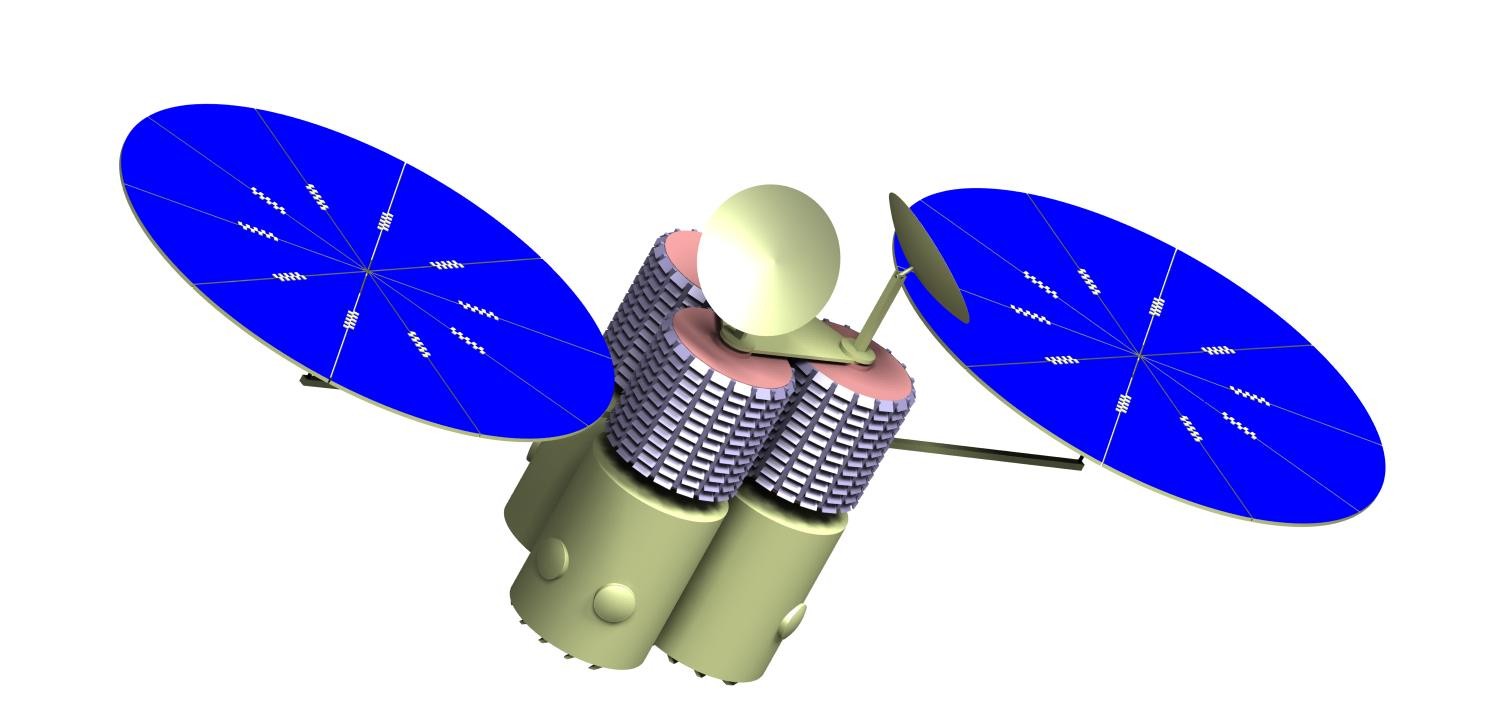
Cycler vehicle (Credit: Project Aldrin-Purdue)
Moreover, having two cyclers maximizes the number of trips from Earth to Mars and gives the possibility to use them as communication satellites to have a continuous link between the two planets (even when Mars is behind the Sun with respect to Earth).
But how do the astronauts get to the cyclers? Three groups of six are launched separately on vehicles called the human landers or HuLa (in fact those are used to get to and from the cyclers). The three HuLa then dock with a boost vehicle, previously sent to low-Earth orbit, which will conduct an hyperbolic rendezvous with the cycler approaching the Earth. This kind of rendezvous has never been done before, but the architecture includes 2 initial tests flights using cargo.
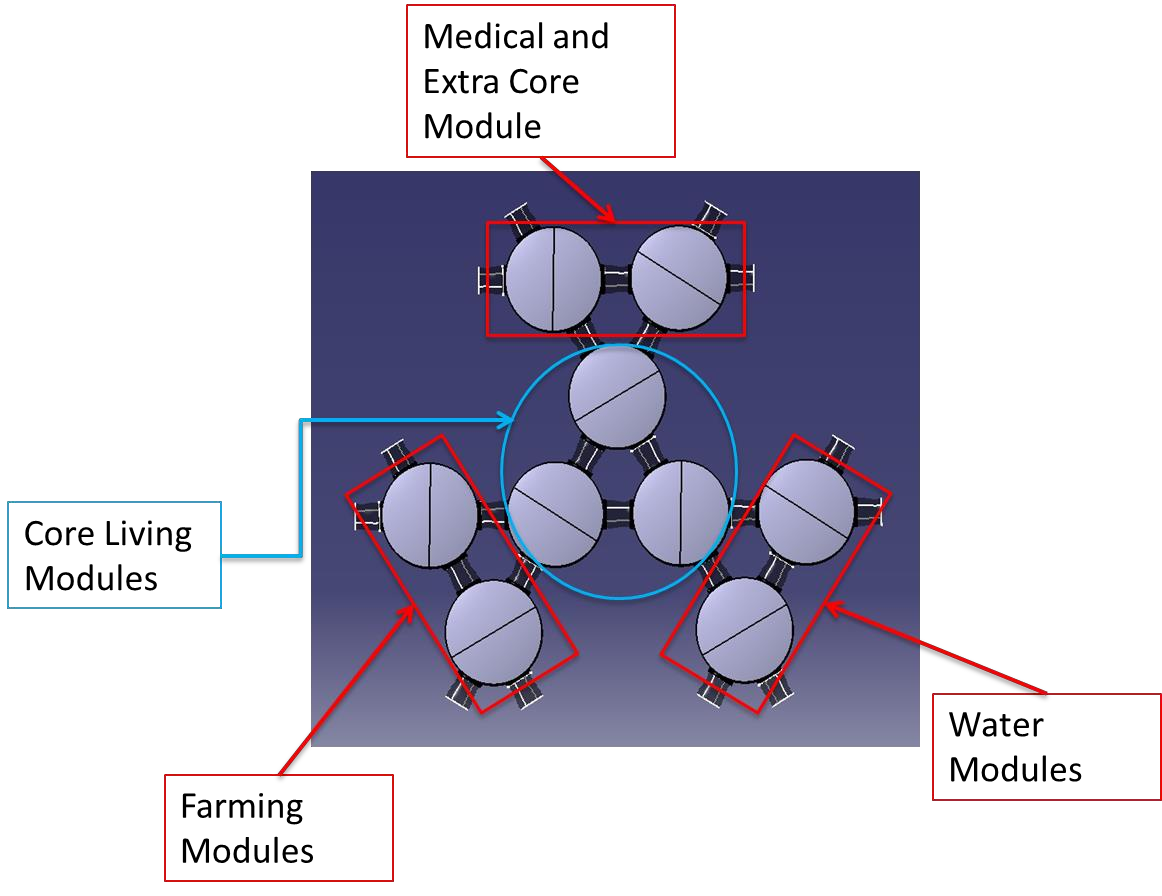
The base to be built on the Martian surface (Credit: Project Aldrin-Purdue)
Because settling a large colony on Mars requires having some kind of a base already installed on the surface, the first two groups of crews will be in charge of preparing it. Six astronauts, on a first cycler, following aerocapture, will enter the Martian atmosphere protected by a deployable heatshield and finally execute a precision landing using the HuLa propulsion system. Twelve additional astronauts from the second cycler will join the crew on the surface, while the remaining six will land on Phobos (remember, each cycler can carry up to three HuLa with six crew in each of them). Those will remotely operate robots on the surface of Mars and coordinate with the team down on Mars to build the base.
Each following cycler will then deliver twelve astronauts to grow the colony on Mars and six to Phobos to replace the previous crew. The initial base, shown above, could host up to 54 settlers, but the architecture composed of Exploration Modules (the same used for the smaller Phobian base) is easily sizable or can be replicated to extend the colony further.
You might be asking yourself why Phobos is interesting and the answer is threefold. Scientists believe Mars’ little moons (Phobos and Deimos) are asteroids captured by the planet and they have never been studied during a dedicated mission so far. NASA Ames and the SETI (in their PADME project), among other groups, have been advocating for many years that doing a Phobian sample return would be very valuable to confirm their origin. They might also be a perfect place for in-situ resources utilization (ISRU) to prepare for further exploration of Mars, and they finally provide the perfect viewpoint of the martian surface.
If you followed through, you know that after those steps are taken, we now have kind of a functional Martian base. But… Since probably most of you by now will have seen The Martian movie, you know that living on Mars can be tough (to say the least). Additionally, although having the possibility to grow plants and get the water from the surface is useful when you want to settle somewhere for good, some things cannot be produced on site.
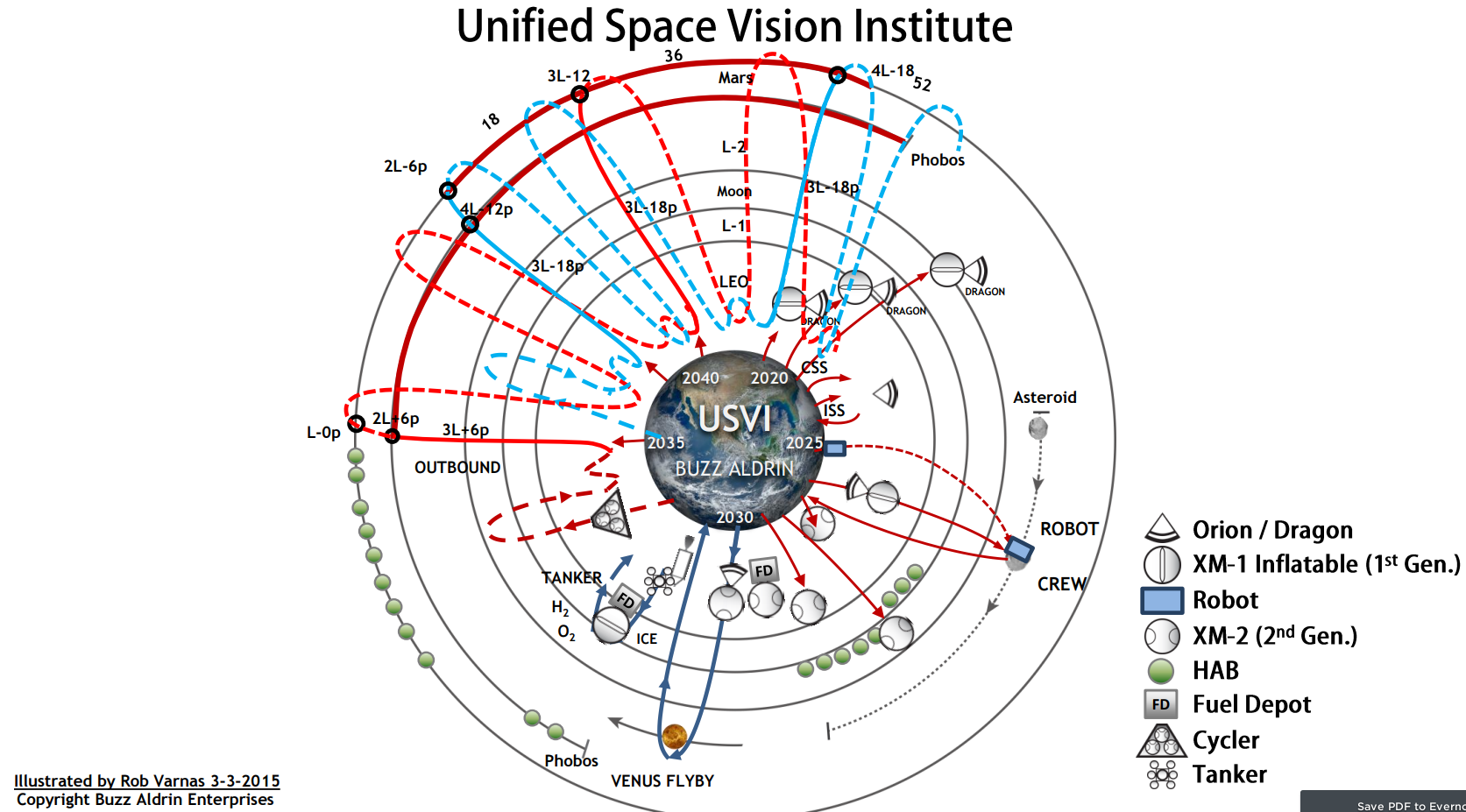
Circular chart illustrating Aldrin’s vision (Credit: Buzz Aldrin Enterprises)
This is why the project includes a cargo lander, appropriately named CarLa, able to bring resupply from Earth following a traditional Hohmann transfer trajectory. Upon landing, the colonists would be able to locate and retrieve the capsule. Last but not least, a return option is built into the architecture, allowing a maximum of six people to get back to Earth from Phobos. The astronauts on the surface would first need to reach Phobos using the Mars ascent module, where they would launch on a HuLa back to the cycler. And here we come to a full circle!
Obviously, this article does not cover the full architecture studied by Aldrin and Purdue University, thus I invite you to continue on to their official webpage. There you will find nicely done videos both by the students and Aldrin himself, their final report and the initial specifications for the mission. If you’re interested in learning more about Aldrin’s vision for Mars, you can read his book “Mission to Mars: My Vision for Space Exploration”.
To wrap up, I want to emphasis the fact that this impressive architecture is still one option among many others. As long as nations and/or the private sector haven’t decided and invested on one solution, we will see many different – and sometimes crazy-looking – ideas come up, and I find this great. This IAC session in Jerusalem saw some really incredible ideas for large Mars transfer vehicles (about 100 passengers), and companies like SpaceX will probably announce their own initiatives soon. Whatever option will be chosen in the end, it will be after a thorough trade-off analysis, and we can ultimately hope that a footprint on Mars could be seen before 2040, in an international effort.
